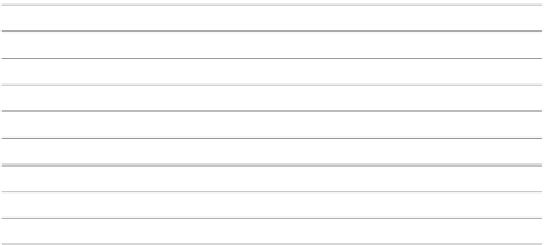Hardware Reference
In-Depth Information
200
180
160
140
120
100
80
60
40
20
0
Interpolating dilution
PCR
Exponential dilution
Proposed algorithm
Prior work [21][22]
Fig. 4.7
Comparison between the number of droplets consumed in the biochips of [
21
,
22
]
(droplet consumptions are the same for the methods of these two papers) and the proposed method
constant operation times, there is a high likelihood that many operations cannot
finish within the allocated time. The outputs of these “unfinished operations” will
be unqualified droplets, and the outcome of the bioassay will be unacceptable.
Next we compute the probability that a bioassay fails due to the occurrence
of unfinished operations. Assume that the execution time for each operation is
Gaussian random variable, and for any two operations in a bioassay, their execution
times are independent of each other. Suppose that for any operation O
i
, its
completion time T
i
has mean value
i
and variance
i
. If we define the time spent
on operation O
i
as T
i
D
i
C
i
, and the real execution time T
i
does not exceed
T
i
,thenO
i
will be correctly executed; otherwise O
i
is deemed to have failed.
A bioassay terminates with an acceptable outcome only if all the operations are
executed correctly. Let P
i
be the probability that a dilution/mixing operation O
i
is
executed correctly, and let the number of dilution/mixing operation in a bioassay be
N
b
. Then the probability P
success
that the bioassay is successfully implemented can
be expressed as: P
success
D
i D1
N
b
P
i
D
P
N
b
(if P
i
D
P for any i ).
Therefore, the probability of successful implementation P
success
exponentially
decreases with the increasing number of dilution/mixing operation. Hence for a
realistic bioassay with a large number of fluidic operations, the compound yield
will be unacceptably low.
Next, based on above discussion, we compute the numerical values of P
success
for three widely used laboratory protocols, namely exponential dilution of a protein
sample, interpolation dilution of a protein sample, and polymerase chain reaction
(PCR). The sequencing graph and the detailed description of the protocol for these
bioassays can be found in [
6
].
Let T
i
be the time spent on operation O
i
when a static synthesis method is applied
based only on a module library, and P
i
be the probability that O
i
is successfully













